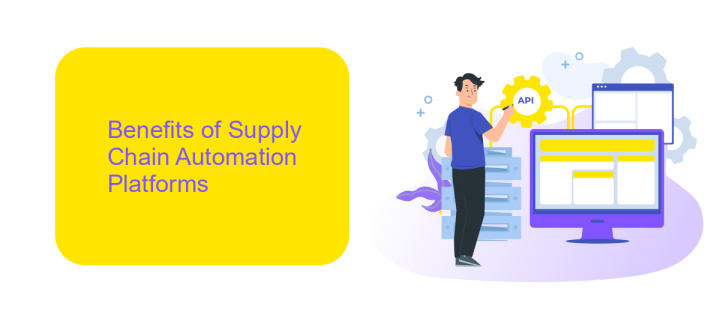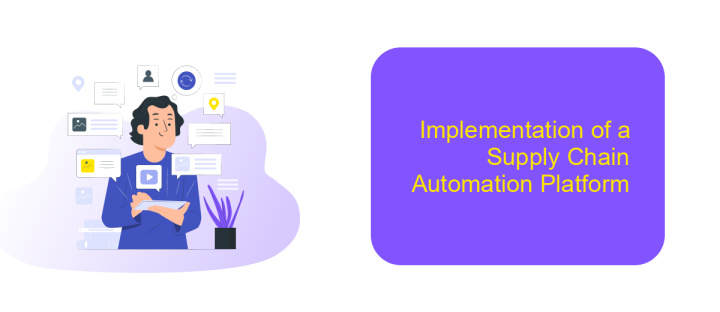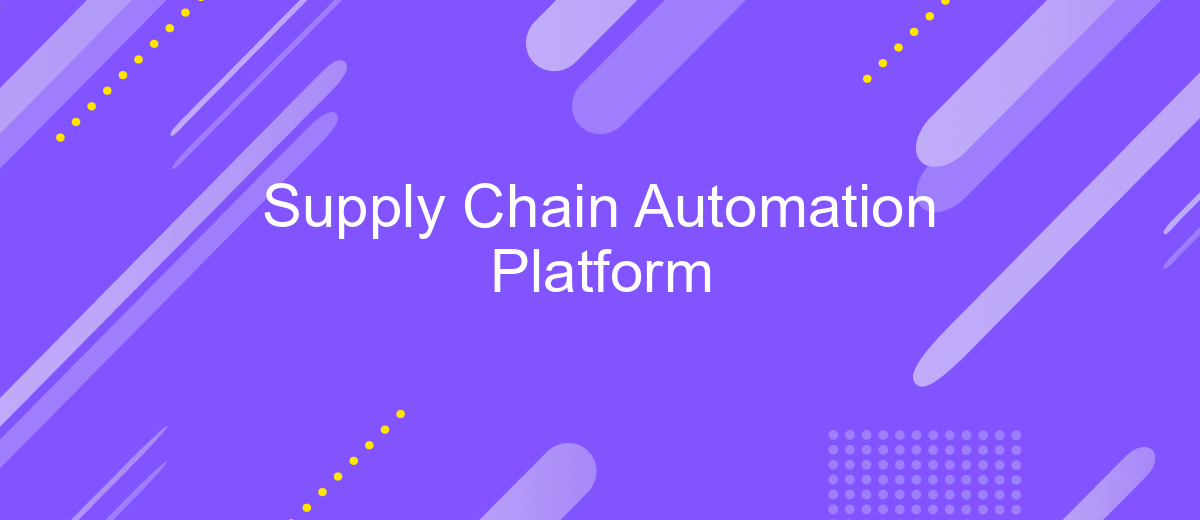Supply Chain Automation Platform
Supply chain automation platforms are revolutionizing the way businesses manage their logistics and operations. By integrating advanced technologies such as AI, machine learning, and IoT, these platforms streamline processes, enhance efficiency, and reduce human error. They offer real-time visibility and data-driven insights, empowering companies to make informed decisions and optimize their supply chains. In this article, we explore the key benefits and features of supply chain automation platforms.
Introduction
In today's rapidly evolving business landscape, supply chain automation platforms are becoming indispensable for organizations striving to enhance efficiency, reduce costs, and maintain a competitive edge. These platforms integrate advanced technologies like artificial intelligence, machine learning, and the Internet of Things to streamline and optimize supply chain operations. By automating complex processes, businesses can improve accuracy, increase visibility, and respond more swiftly to market demands.
- Enhanced operational efficiency through automated workflows.
- Improved accuracy with real-time data analytics and insights.
- Better decision-making facilitated by predictive analytics.
- Increased supply chain visibility and transparency.
- Reduced operational costs by minimizing manual interventions.
As companies navigate the complexities of global markets, adopting a supply chain automation platform becomes a strategic imperative. These platforms not only help in mitigating risks but also enable businesses to adapt to changing environments with agility. By leveraging technology to drive innovation, organizations can unlock new opportunities, ensuring sustainable growth and long-term success. Embracing supply chain automation is no longer an option but a necessity for forward-thinking enterprises.
Benefits of Supply Chain Automation Platforms

Supply chain automation platforms offer a multitude of benefits that significantly enhance operational efficiency. By automating repetitive tasks, these platforms reduce human error and increase productivity. They facilitate real-time data analysis, enabling businesses to make informed decisions quickly. This improved decision-making process leads to optimized inventory management, reduced costs, and faster delivery times. Additionally, automation platforms streamline communication between different parts of the supply chain, ensuring seamless coordination and collaboration.
Another significant advantage of supply chain automation platforms is their ability to integrate with various systems and services. Tools like ApiX-Drive simplify the integration process, allowing businesses to connect disparate systems effortlessly. This integration capability ensures that information flows smoothly across the supply chain, enhancing visibility and traceability. As a result, companies can respond swiftly to changes in demand or supply, maintaining a competitive edge. Overall, supply chain automation platforms are indispensable for businesses aiming to improve efficiency, reduce costs, and enhance customer satisfaction.
Types of Supply Chain Automation Platforms

Supply chain automation platforms are essential for enhancing efficiency and reducing manual intervention in logistics and operations. These platforms come in various forms, each tailored to specific needs and functionalities. Understanding the different types can help businesses choose the right solution to optimize their supply chain processes.
- Enterprise Resource Planning (ERP) Systems: These platforms integrate various business processes, including supply chain management, to streamline operations and provide real-time data insights.
- Transportation Management Systems (TMS): TMS platforms focus on optimizing the transportation component of the supply chain, offering features like route planning, freight auditing, and shipment tracking.
- Warehouse Management Systems (WMS): These systems are designed to control and manage warehouse operations, including inventory management, picking, and packing processes.
- Demand Forecasting Tools: These tools use data analytics and machine learning to predict future demand, helping businesses adjust their supply chain strategies accordingly.
Choosing the right type of supply chain automation platform depends on a company's specific operational needs and objectives. By leveraging the appropriate technology, businesses can achieve greater efficiency, cost savings, and improved customer satisfaction in their supply chain operations.
Implementation of a Supply Chain Automation Platform

Implementing a Supply Chain Automation Platform requires a strategic approach to ensure seamless integration and optimal performance. The first step involves conducting a thorough assessment of existing supply chain processes to identify areas that can benefit from automation. This evaluation helps in defining clear objectives and expectations for the platform.
Once the assessment is complete, selecting the right technology partner becomes crucial. The chosen platform should align with the company's goals and be flexible enough to adapt to changing market demands. It is essential to involve key stakeholders in the decision-making process to ensure that the platform meets the needs of all departments.
- Conduct a comprehensive needs analysis.
- Select a platform that aligns with business objectives.
- Ensure stakeholder involvement in decision-making.
- Develop a detailed implementation plan.
- Provide training for staff to facilitate adoption.
After the platform is selected, a detailed implementation plan should be developed. This plan must outline timelines, resource allocation, and risk management strategies. Training programs should be established to ensure staff are well-equipped to utilize the new system effectively. By following these steps, companies can successfully implement a Supply Chain Automation Platform, leading to improved efficiency and competitiveness.
- Automate the work of an online store or landing
- Empower through integration
- Don't spend money on programmers and integrators
- Save time by automating routine tasks
Conclusion
In conclusion, the implementation of a Supply Chain Automation Platform is a transformative step for businesses aiming to enhance efficiency and responsiveness in their operations. By integrating advanced technologies such as AI and machine learning, companies can automate repetitive tasks, optimize inventory management, and improve demand forecasting. This not only reduces operational costs but also enhances customer satisfaction by ensuring timely delivery of products.
Furthermore, seamless integration of various systems is crucial for the success of such platforms. Services like ApiX-Drive facilitate this by offering robust solutions for connecting different software applications, enabling smooth data flow across the supply chain. With the ability to set up integrations without extensive coding, businesses can quickly adapt to changing market demands and scale their operations efficiently. Ultimately, embracing a Supply Chain Automation Platform positions companies to remain competitive in an increasingly dynamic marketplace.
FAQ
What is a Supply Chain Automation Platform?
How can a Supply Chain Automation Platform benefit my business?
What are the key features to look for in a Supply Chain Automation Platform?
How difficult is it to integrate a Supply Chain Automation Platform with existing systems?
Can a Supply Chain Automation Platform be customized for specific industry needs?
Strive to take your business to the next level, achieve your goals faster and more efficiently? Apix-Drive is your reliable assistant for these tasks. An online service and application connector will help you automate key business processes and get rid of the routine. You and your employees will free up time for important core tasks. Try Apix-Drive features for free to see the effectiveness of the online connector for yourself.


